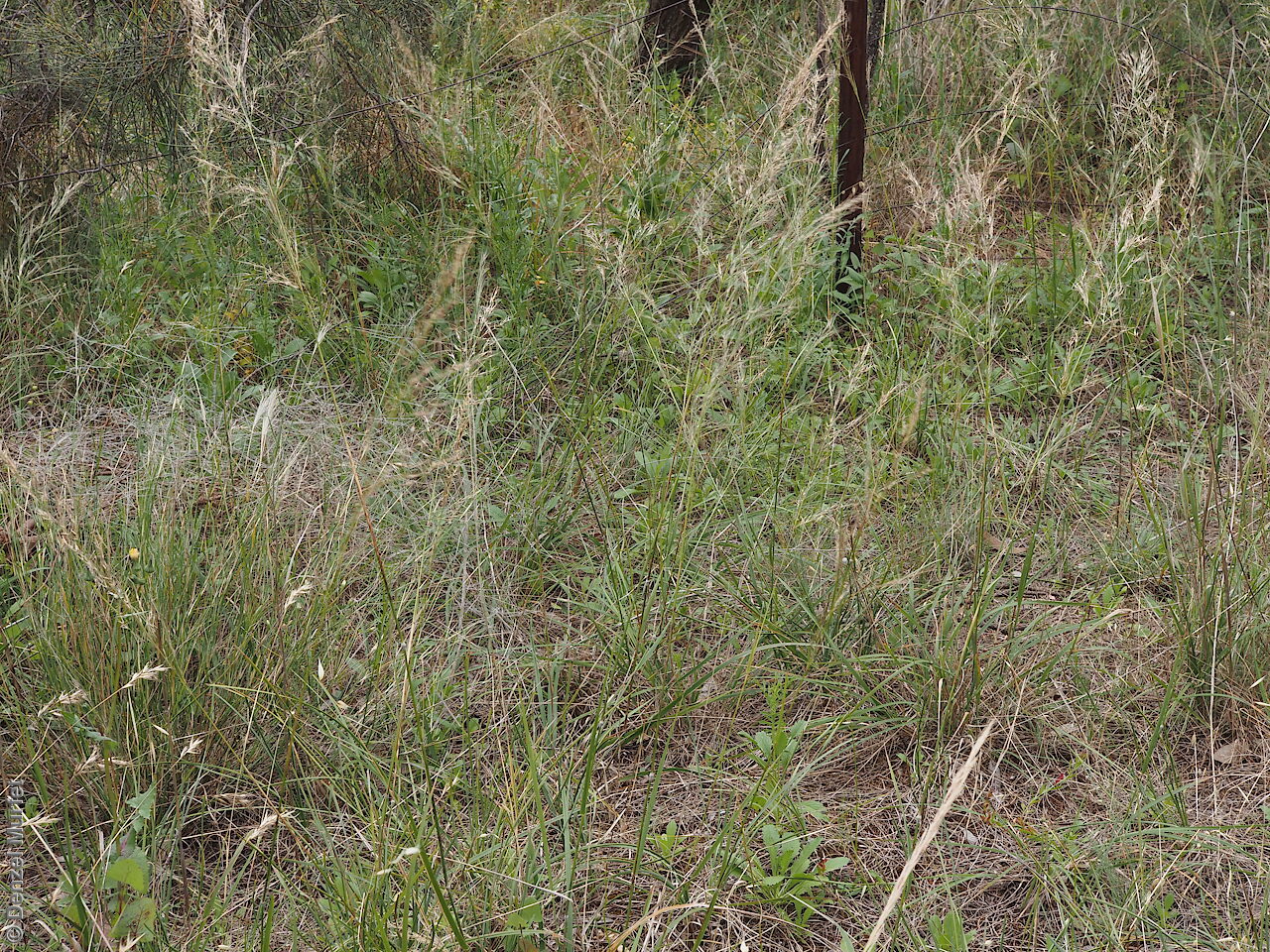
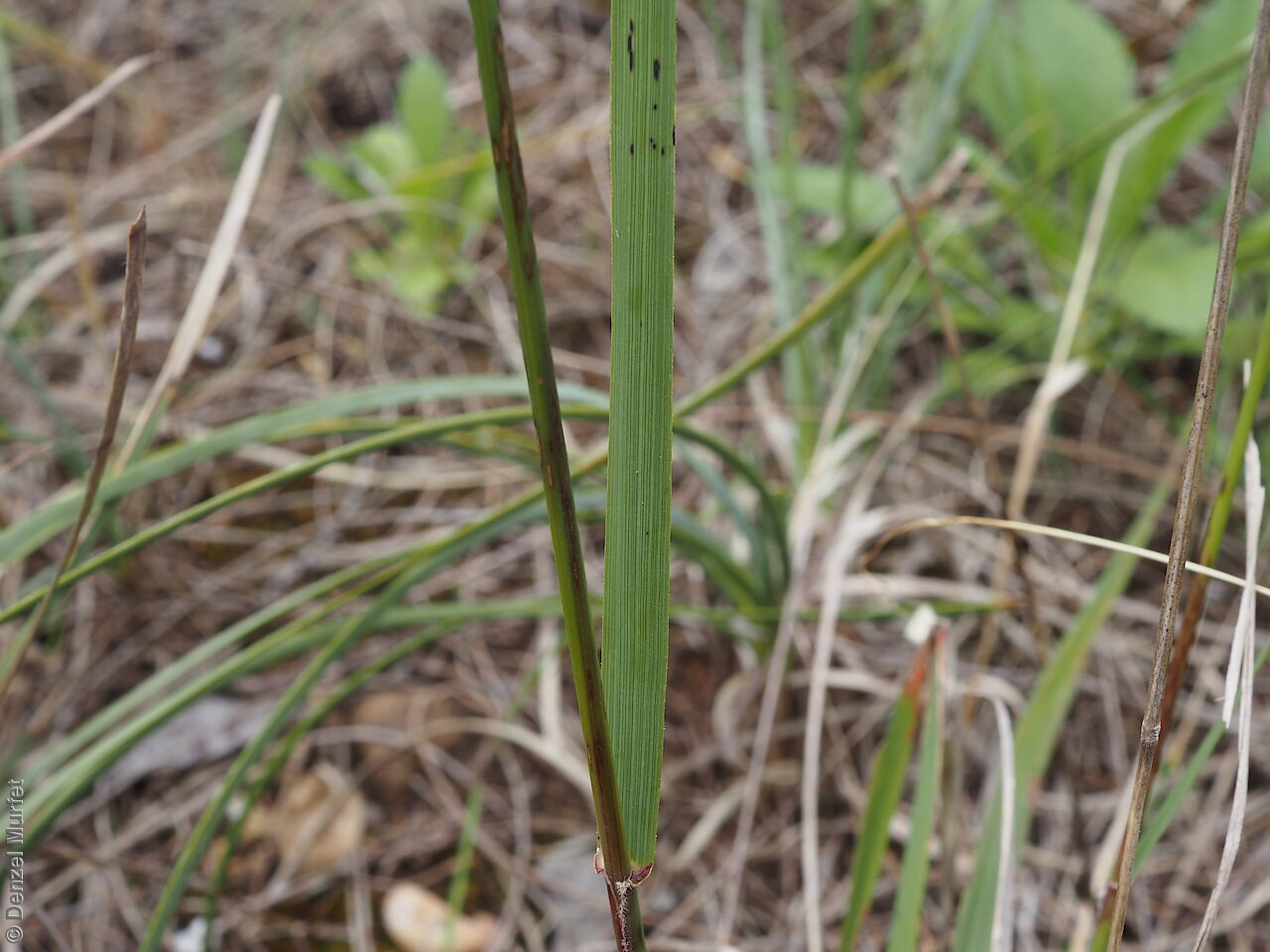
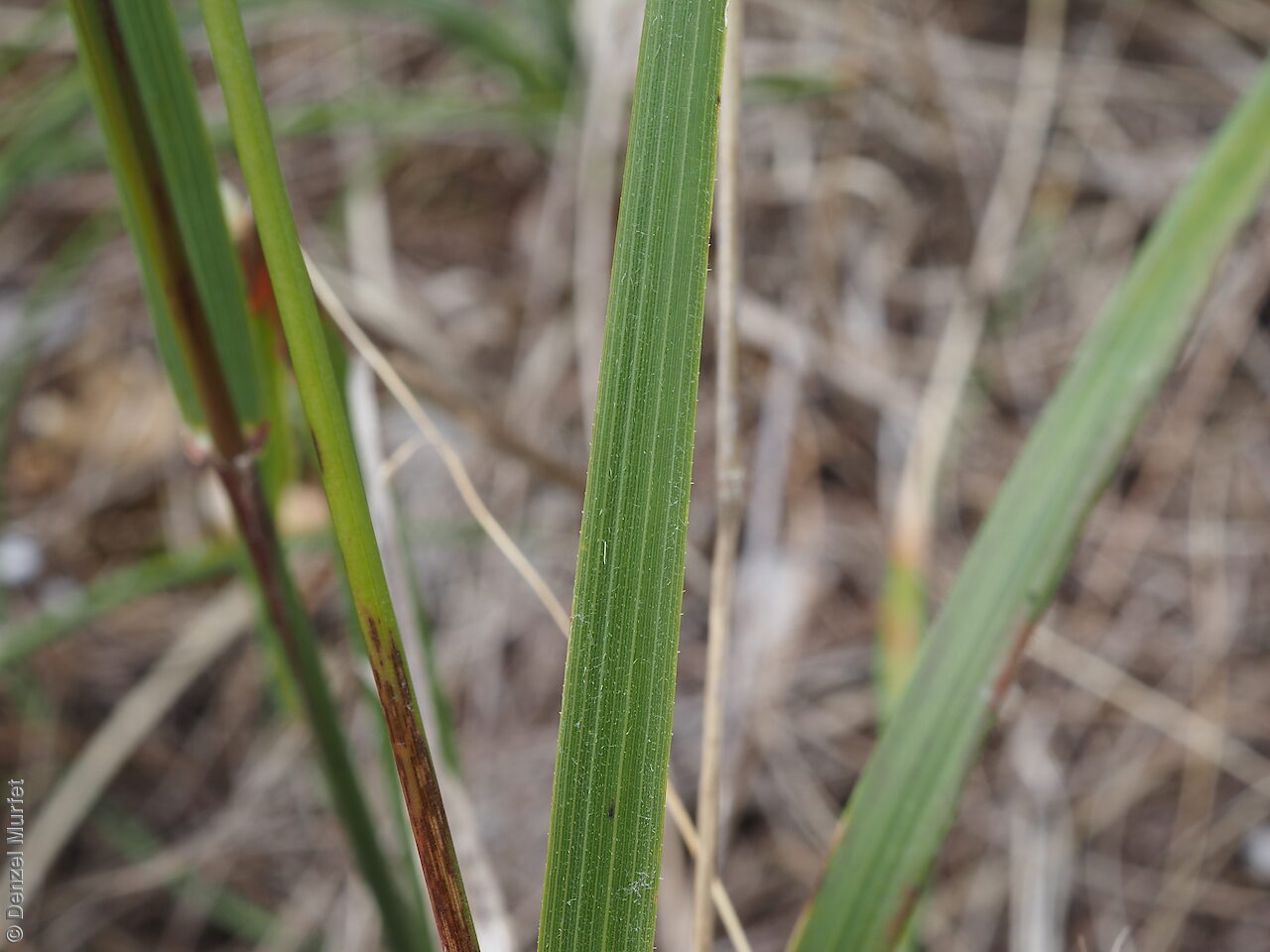
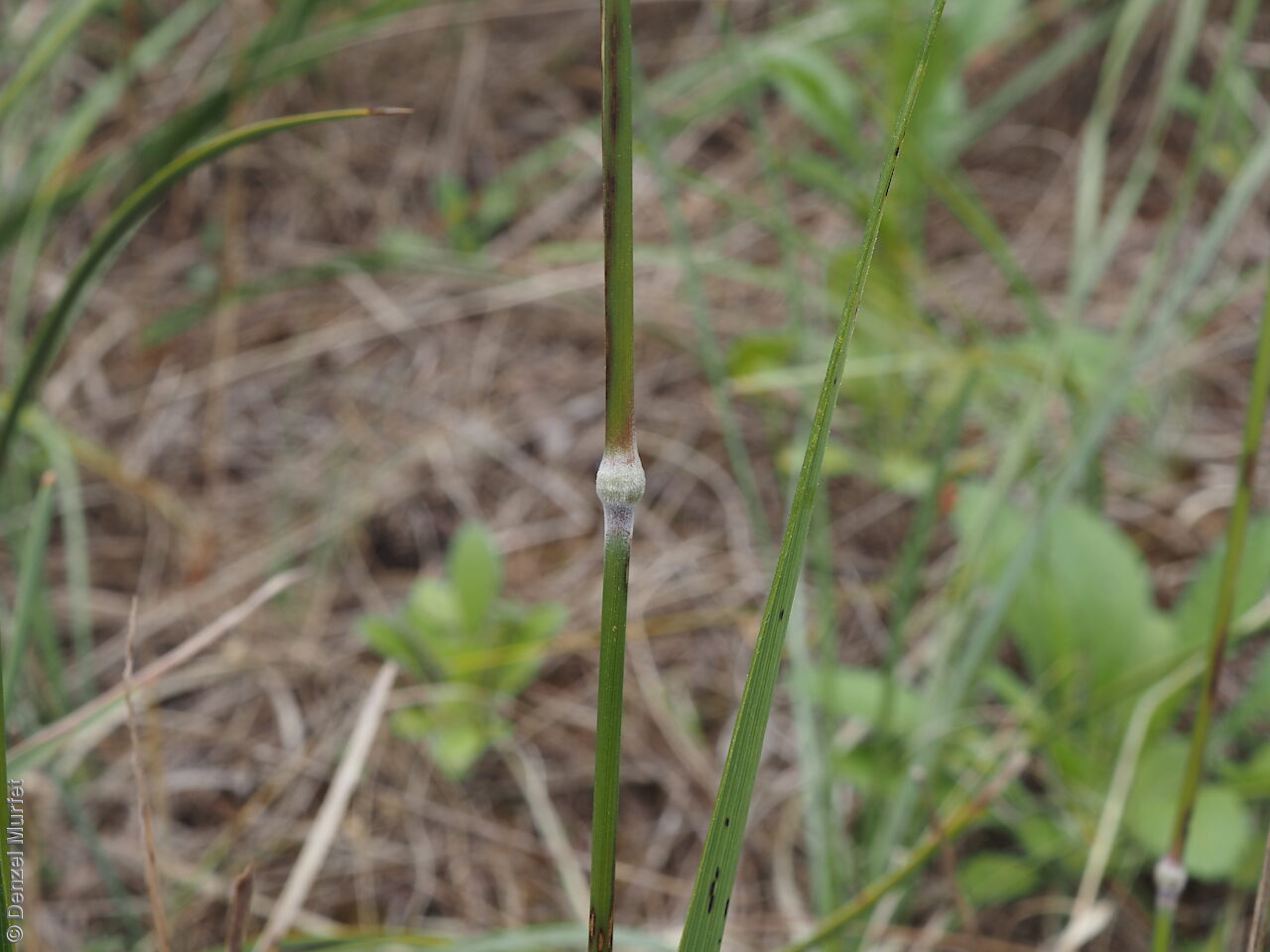
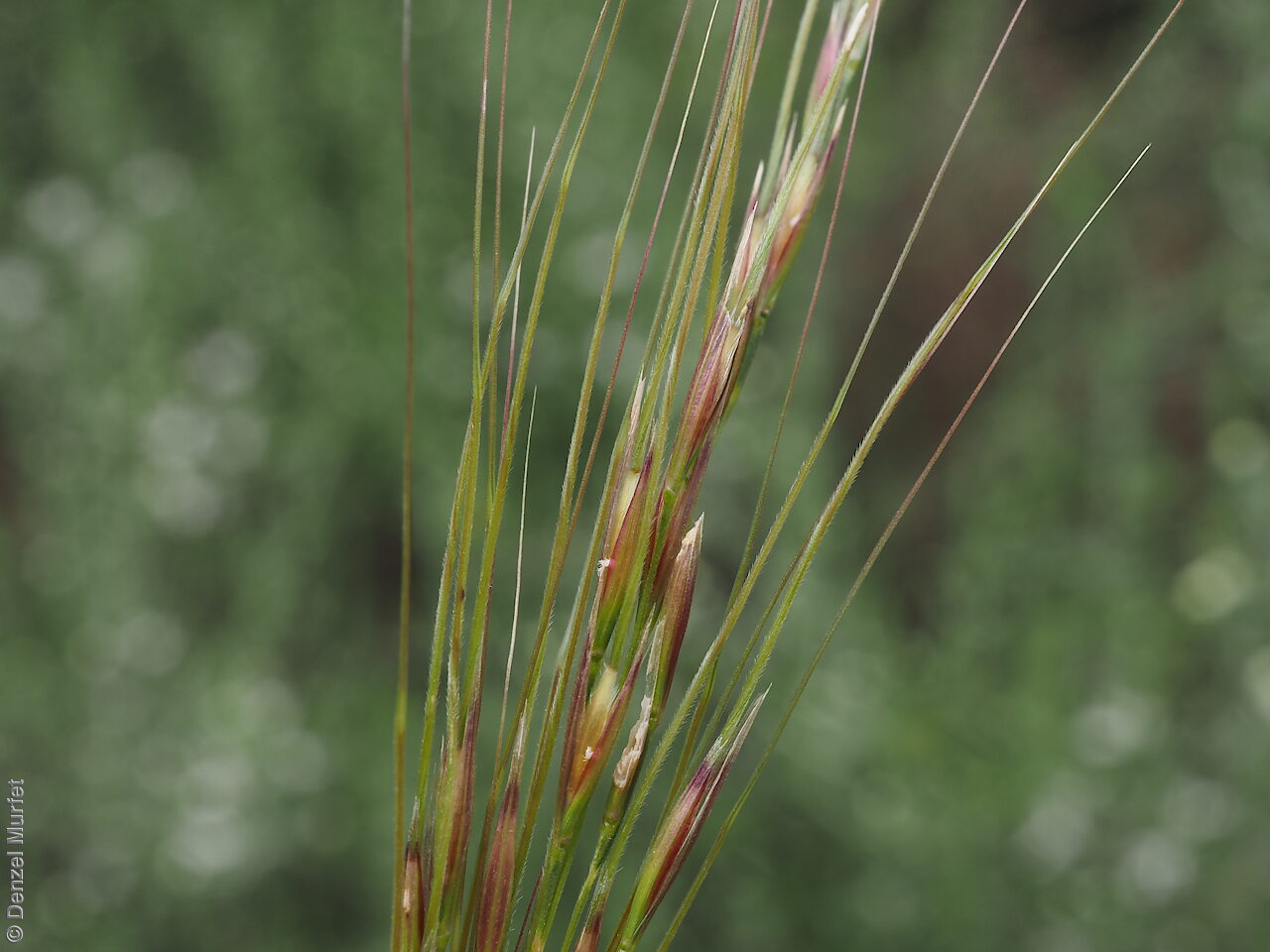
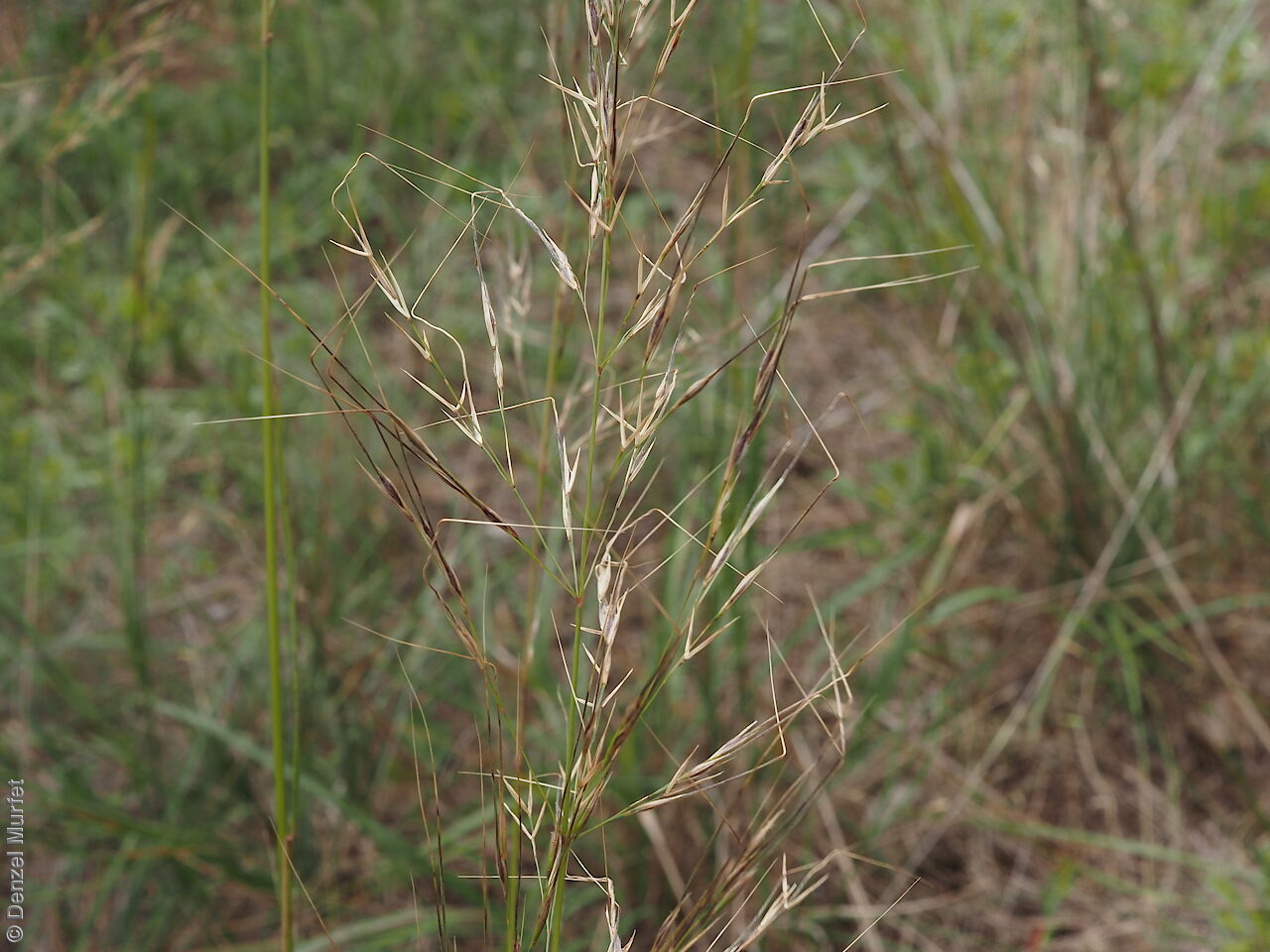
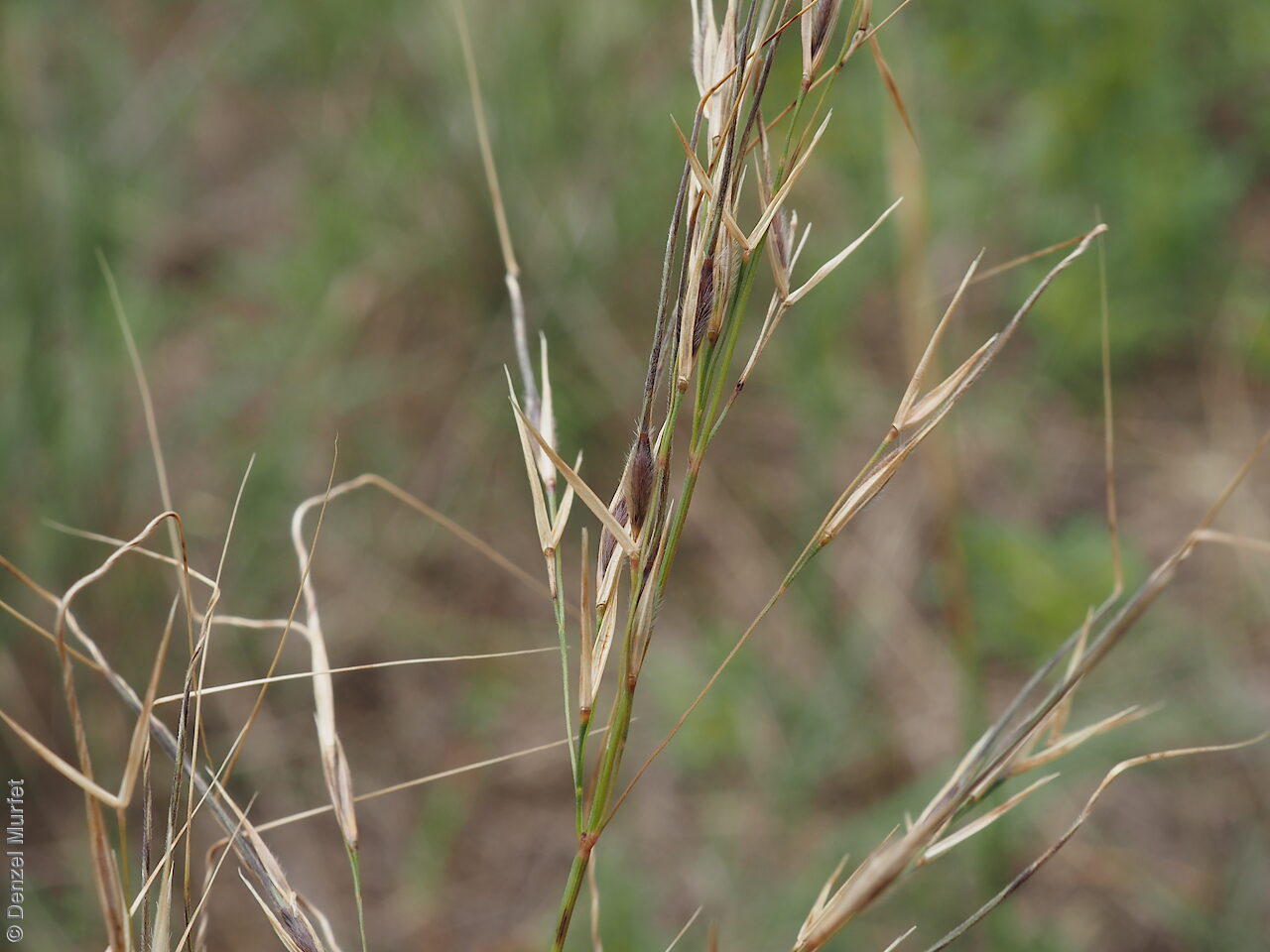
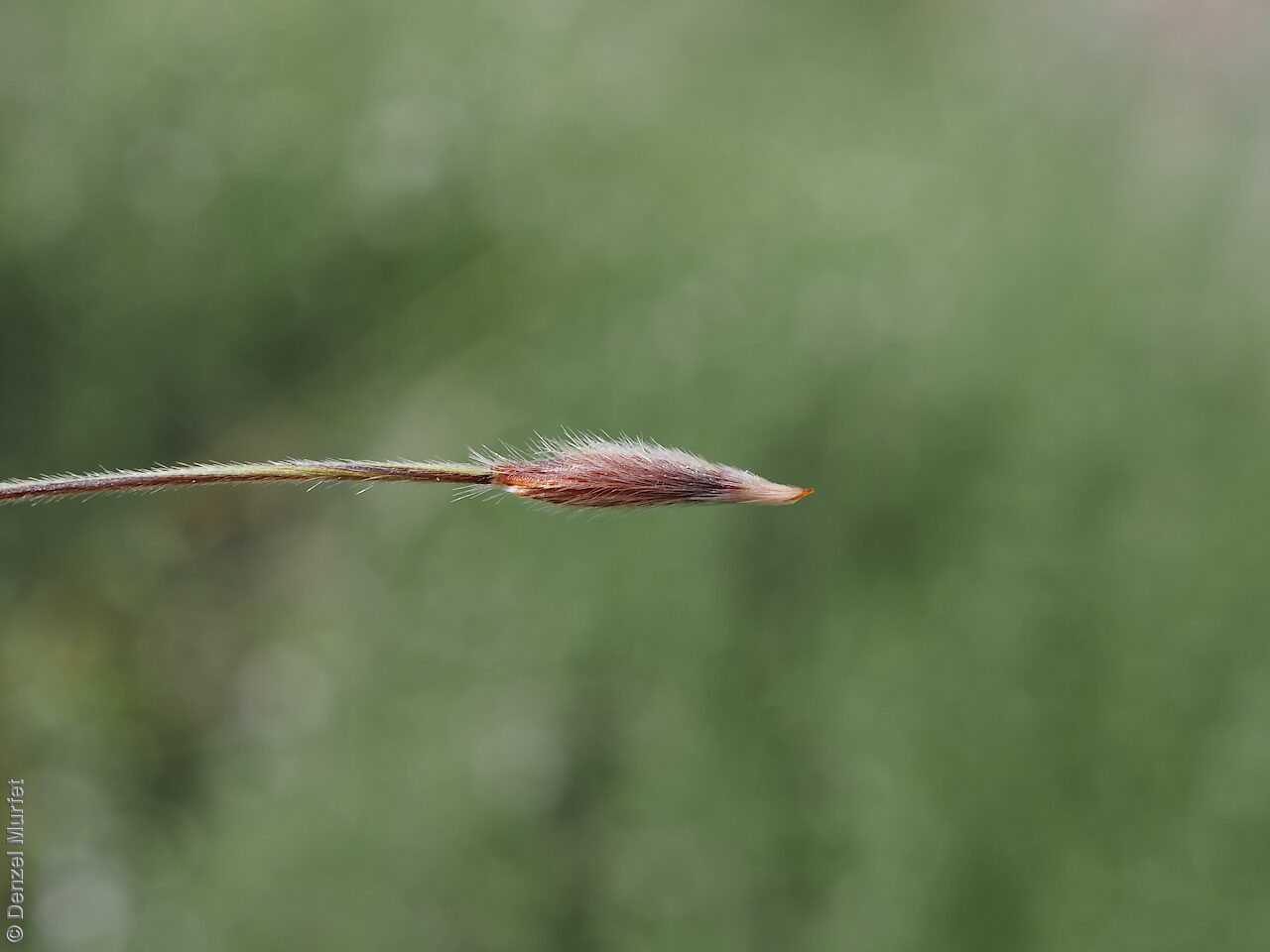
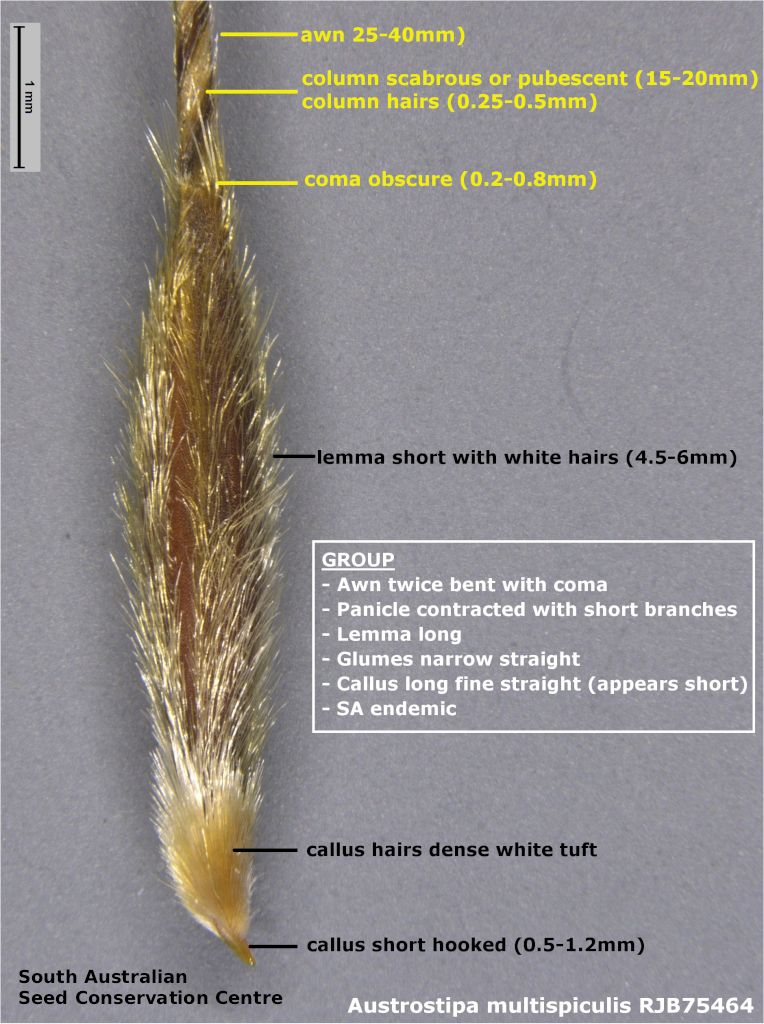
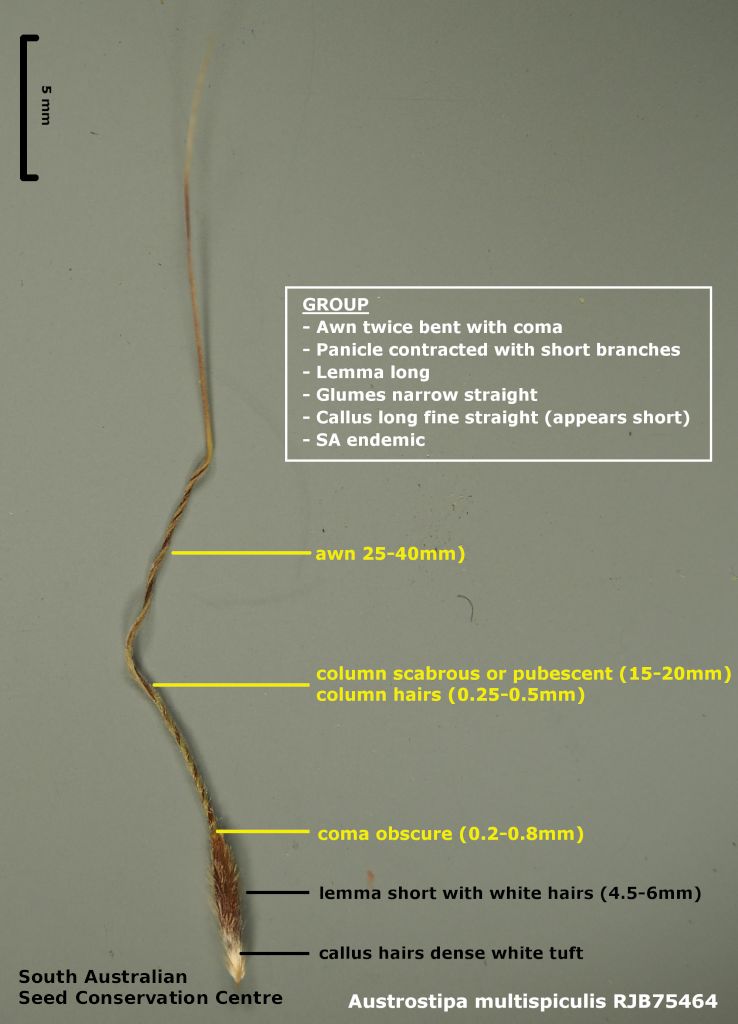
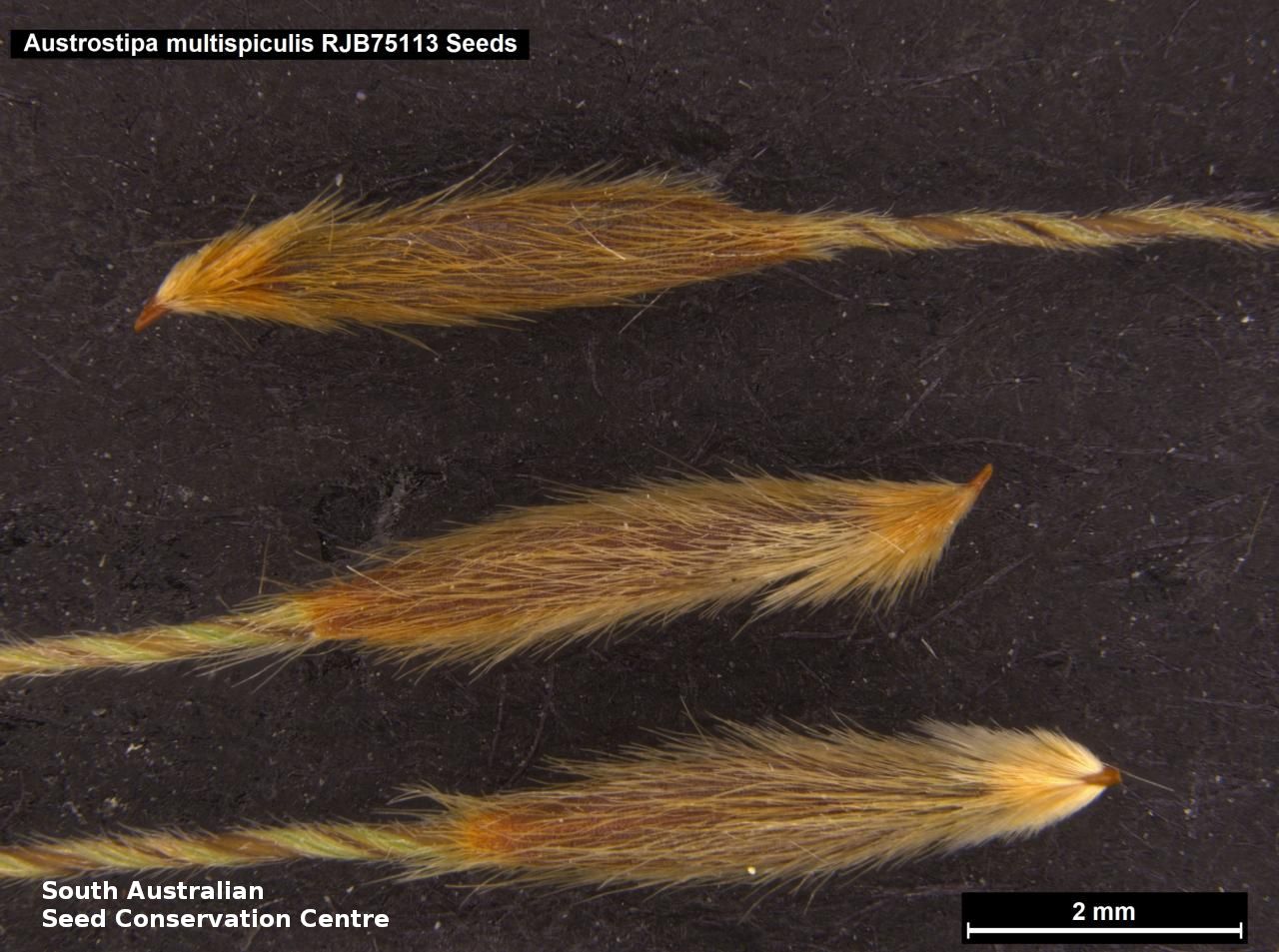
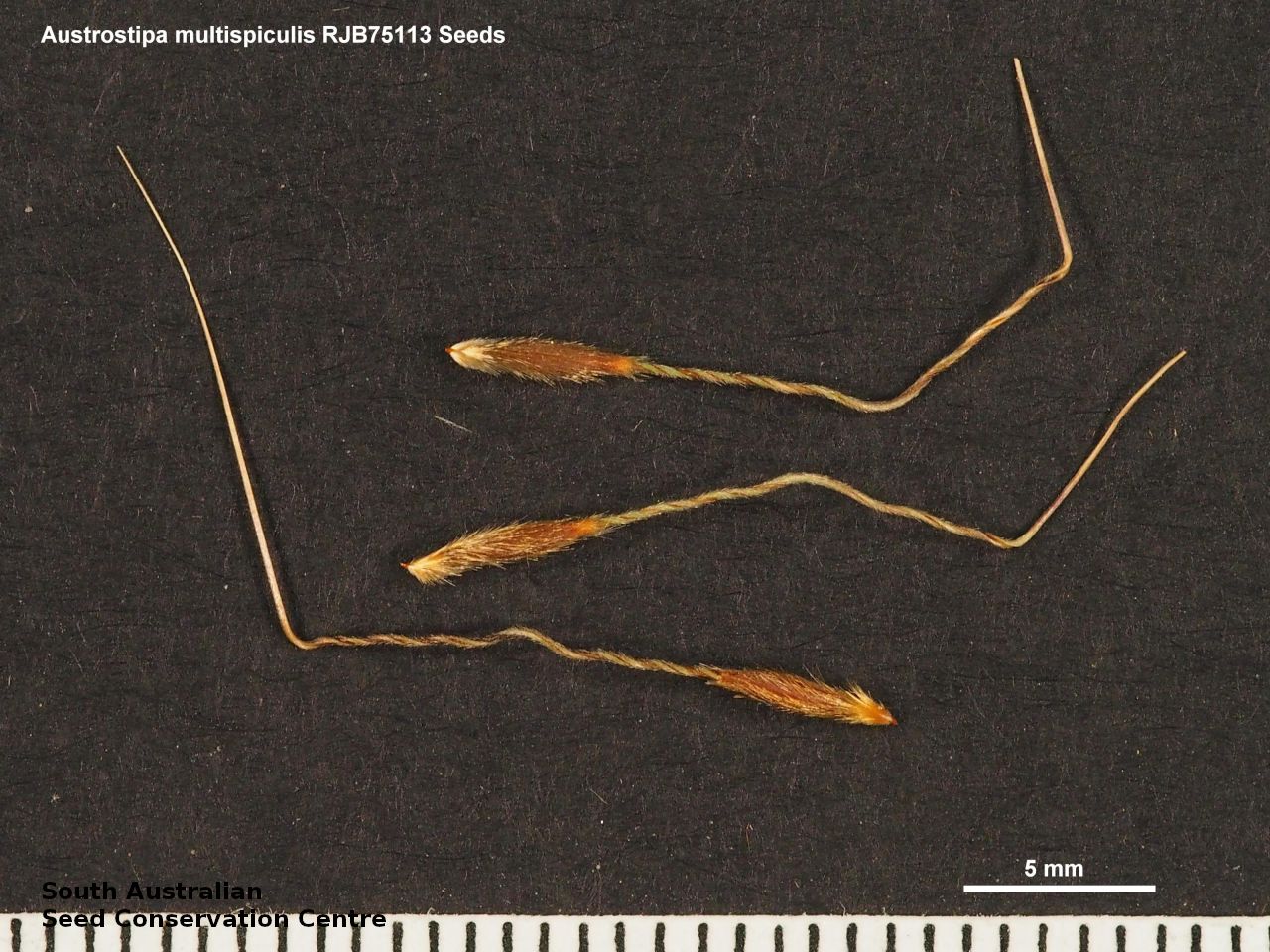


Prior names
Stipa multispiculis
Common names
Small-seed Spear-grass
Many-flowered Spear-grass
Etymology
Austrostipa from the Latin 'auster' meaning south and the genus Stipa, referring to the genus being allied to Stipa but restricted to Australia. Multispiculis from the Latin 'multus' meaning many and 'spica' meaning projection (as in spikelets), referring to its inflorescence with many spikelets.
Distribution and status
Endemic to South Australia and found on the Yorke Peninsula, Kangaroo Island and the Mount Lofty Ranges growing on limestone loams and sandy loams in woodland and grassland. Native. Rare in South Australia.
Herbarium regions: Northern Lofty, Murray, Southern Lofty, Kangaroo Island, Green Adelaide
NRM regions: Adelaide and Mount Lofty Ranges, Kangaroo Island, Northern and Yorke
AVH map: SA distribution map (external link)
Plant description
Tufted perennial grass to 1 m high with short rhizome; culms dense, unbranched and with silky hairy nodes. Leaves sub-glabrous to scabrid below and above, loosely rolled or flat, to 70 cm long and 8 mm wide. Inflorescence a contracted, dense panicle to 40 cm long with hairy glumes, lower glumes longer than the upper. Flowering between October and November.
Key to this species: awn twice bent with coma; panicle dense contracted with short open branches; glumes narrow straight; callus 'long' but appears short; culm stout (1-4 mm); lower glume (8.5-10 mm); lemma short to 6 mm with dense white hairs; SA endemic. Fruits are short, brown narrow-linear to linear-elliptic lemma to 6 mm long with a granular surface and covered in whitish hairs,;coma to 0.8 mm long; callus to 1.2 mm long but appear short, as covered by a tuft of dense white hairs; awn very short, twice bent, to 45 mm lo, with column scabrous or pubescent with hairs to 0.5 mm long. Seeds are yellow-brown narrow-ellipsoid grain within the lemma. Seed embryo type is lateral.
Seed collection and propagation
Collect seeds between November and January. Use your hands to gently strip the seeds (lemma) off the mature fruiting spike, those that are turning golden colour. Mature seeds will come off easily compare to the immature seeds that remain on the spike. Alternatively, you can break off the whole fruit spike to allow some of the seeds to mature further. Place the seeds/spike in a tray and leave to dry for two weeks. No further cleaning is required if only seed collected. If seed spikes collected, use hand to strip off the mature seeds. Store the seeds with a desiccant such as dried silica beads or dry rice, in an air tight container in a cool and dry place. Viability of grass seeds could be very viable, depending on time of seed collections and seasonal conditions.
| Location | No. of seeds (weight grams) | Number of plants | Date collected | Collection number Collection location | Date stored | % Viability | Storage temperature |
|---|---|---|---|---|---|---|---|
| BGA | 8,000 (25.17 g) | 50 | 14-Oct-2007 | RJB75385 Flinders Ranges | 19-Sep-2008 | 90% | +5°C, -18°C |
| BGA MSB | 1,500 (3.61 g) 1,500 (3.61 g) | 50 | 26-Oct-2007 | RJB75113 Southern Lofty | 19-Sep-2008 | 60% | +5°C, -18°C |
Number of plants: This is the number of plants from which the seeds were collected.
Collection location: The Herbarium of South Australia's region name.
% Viability: Percentage of filled healthy seeds determined by a cut test or x-ray.